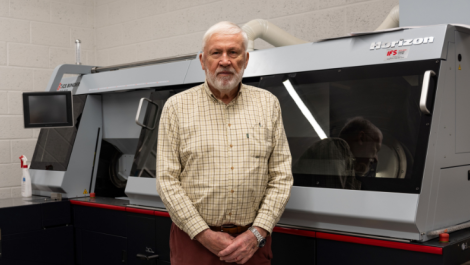Henry Ling Ltd, is expanding its digital production capacity as it completes its latest investment programme with technologies from Canon.
Keen to move to an inkjet platform to achieve a high colour production volume capability the company opted for the Océ ColorStream 3700 continuous feed printer from Canon.
As part of the wider investment programme, completed in the last few weeks, the firm has also purchased the Océ VarioPrint 6250 to manage short-run production of books and journals.
‘We have a policy of continual investment in technology to ensure we remain at the forefront of the publishing industry and are able to meet emerging market requirements,’ said Helen Kennett, managing director. ‘We feel that inkjet is the technology of the future and, as such, looked to replace our existing toner platform and invest in one that would allow us to integrate colour into primarily mono titles and simultaneously increase production capacity. We just needed to wait for the quality of output to be at an acceptable level.’
Henry Ling produces work for a wide spectrum of customers including global commercial journal publishers, learned societies and institutes and some of the largest book publishers in the UK. Using both litho and digital production methods, the company is able to deliver print quantities for customers from a single copy to tens of thousands.
‘Since bringing on board the Océ VarioStream 9230 several years ago, Canon has always excelled in terms of service and support and this played a fundamental role in our decision to invest in further Canon technology,’ added Mr Kennett. ‘With such a significant venture into inkjet – both financially and in terms of changing our production processes – we needed to be sure that we would be working with a reliable partner and we are confident that this was the right move.’
The high speed Océ ColorStream 3700 prints at speeds of up to 100 m/min and it simplifies and accelerates the transition from monochrome to full-colour, or even five/six colours. The DigiDot multilevel dot modulation produces crisp details and smooth halftones with a perceived quality of 1200 dpi at full rated speed.


